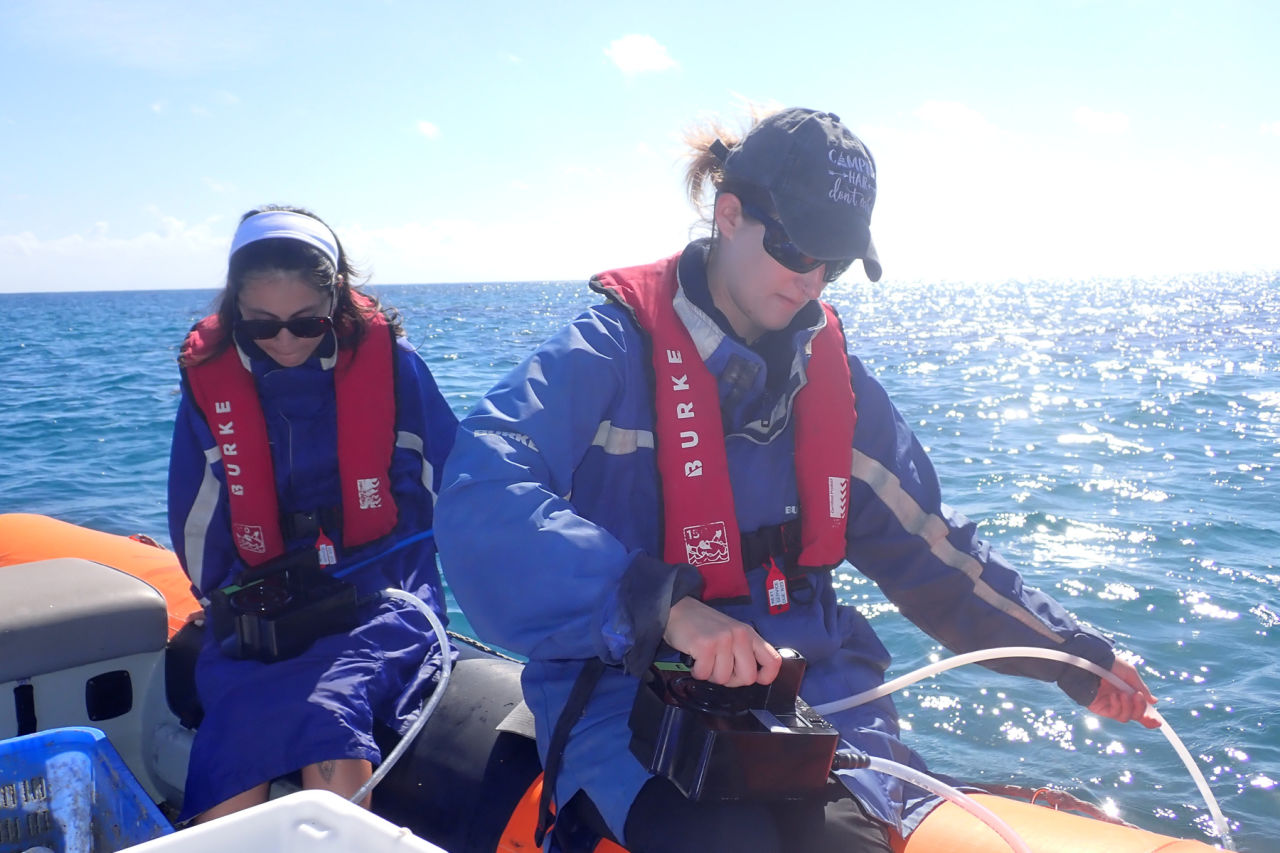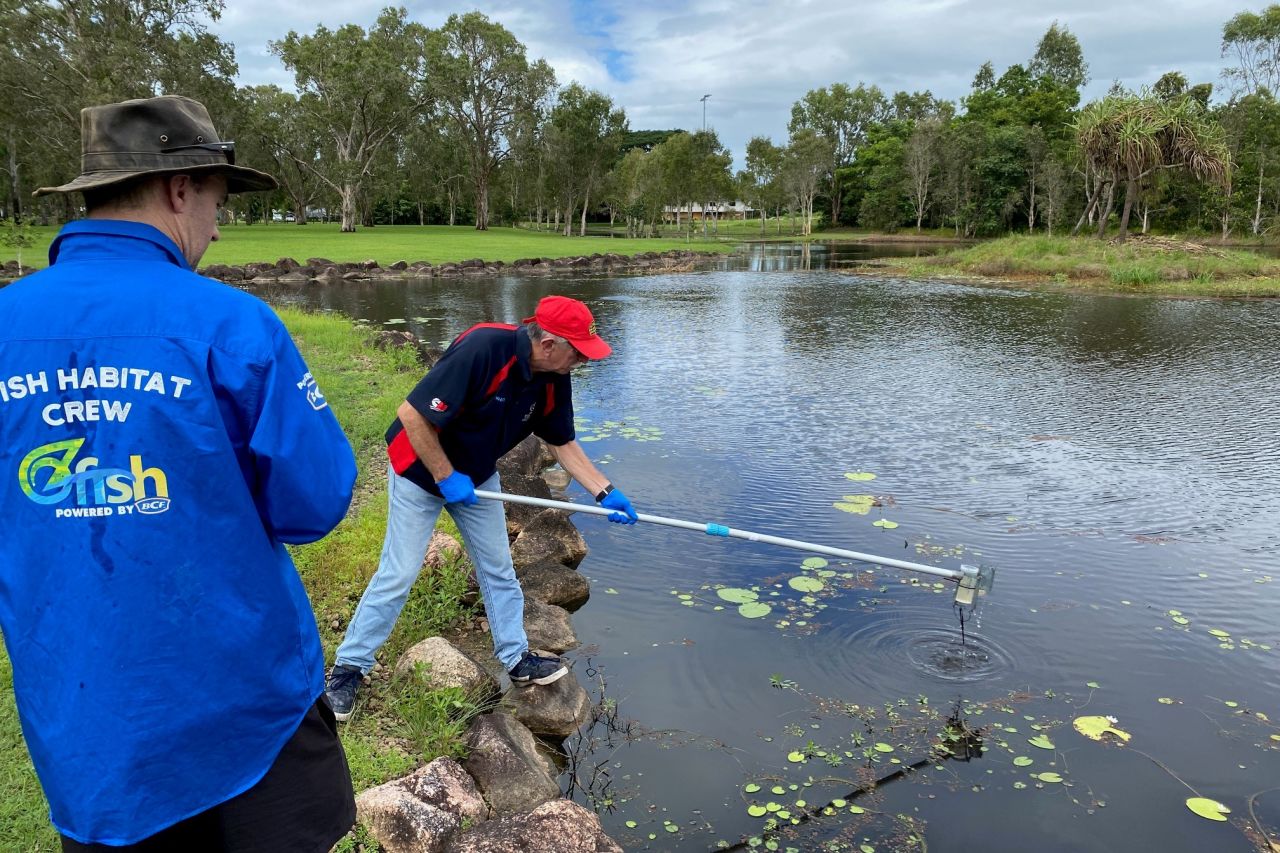Environmental DNA, or eDNA, can help us detect species by the traces they leave behind in their surroundings. This groundbreaking tool is transforming our understanding of species populations, particularly in coral and coastal habitats. As ecosystems face growing threats, knowing what lives within them is essential for their protection.
#What is eDNA?
Environmental DNA consists of tiny genetic clues left behind by an animal in an environment. These traces and materials - like skin cells, saliva and waste - can help us learn which species are present, even in remote areas.
Researchers collect and analyse water, air or soil samples from the environment. They then sequence it to detect DNA of a specific species present in the sample area.
This method provides researchers, communities and managers with a non-invasive and efficient solution to monitor biodiversity, track species populations and identify invasive species, all without the need for direct observation or capture. eDNA is especially valuable in marine environments, such as the Great Barrier Reef, where it is used to detect species like the crown-of-thorns starfish.

Water samples are analysed to detect DNA of specific species present in an area. Credit: Bendi Media.
#How do we use eDNA to detect crown-of-thorns starfish?
Crown-of-thorns starfish (COTS) are spiky marine invertebrates known for their needle-sharp spines and appetite for coral. They occur naturally on reefs across the Indo Pacific region, including the Great Barrier Reef, and are a major threat to Reef health and resilience in the face of climate change. Each COTS consumes up to 10 square metres of coral per year - and when an outbreak occurs, hundreds of thousands of coral-eating starfish can strip a healthy reef of 90% of its corals.
COTS are nocturnal by nature and hide in crevices on the Reef, making it difficult to detect the pest using traditional Reef survey methods.
eDNA monitoring offers an advanced early-warning tool for detecting outbreaks before they escalate. It is one of the cutting-edge methods developed by the COTS Control Innovation Program - a collaborative research partnership between the Great Barrier Reef Foundation, the Australian Institute of Marine Science, CSIRO, James Cook University and The University of Queensland.
The technique allows scientists and managers to identify locations where starfish may be present by collecting small samples of seawater that are passed through fine filters. These filters capture DNA shed by marine life that can be extracted and tested in the lab to see if there are traces of the coral-eating starfish.
Environmental DNA monitoring can detect even a small number of COTS on a coral reef. This is a game-changer because it will enable Reef managers to intervene and manage COTS numbers before they reach outbreak numbers and cause widespread damage.

eDNA monitoring is helping scientists and managers identify where crown-of-thorns starfish may be present. Credit: Australian Institute of Marine Science.
#Empowering communities to monitor fish populations
Freshwater and estuarine fish play a vital role in maintaining healthy aquatic ecosystems. Yet, we know surprisingly little about many fish populations, their migration patterns and the vast coastal habitats that they call home. Traditional fish surveys rely on methods like underwater cameras or physical capture, which can be time-consuming and invasive.
Environmental DNA shows great promise as a community-based monitoring tool to address major data gaps to assess fish biodiversity in our waterways and survey pests, such as introduced aquarium species. It could also help us scale the technology to collect critical information across vast areas of coasts and waterways.
Citizen scientists are helping expand data collection by collecting water samples in their local waterways. A collaboration between the Great Barrier Reef Foundation, CSIRO, OzFish and James Cook University TropWATER, has been piloting methodologies to overcome critical data barriers and enable more community-based applications of eDNA monitoring. By working with fishers, waterway users and local custodians, eDNA samples have the potential to exponentially grow our understanding and protection of fish and their habitats. It also inspires community action and stewardship for the local environment.

Citizen scientists are helping expand data collection by gathering eDNA water samples in local waterways. Credit: OzFish Unlimited.
#Identifying invasive species using eDNA
Environmental DNA is not only a powerful tool for monitoring marine species, it also shows promise for land applications. Many Great Barrier Reef islands are isolated and somewhat protected from invasive flora and fauna, but increasing human activity is introducing unwanted pest species, such as ants, to these ecosystems.
A collaborative research project between the Great Barrier Reef Foundation, Queensland Parks and Wildlife Service and Partnerships, TropWATER, Whitsunday Regional Council, Mandubarra Aboriginal Land and Sea Incorporated and Goondoi Aboriginal Corporation Landcare sought to understand if eDNA monitoring could be used to detect the presence of harmful ants through soil samples. These ants pose a serious threat to small island natives including bird chicks and turtle hatchlings.
Researchers used eDNA samples to analyse soil for invasive ant species. Laboratory tests are designed to identify particular DNA sequences that are unique to a targeted species. This project created these tests for electric ants, red imported fire ants and tropical fire ants. It also field tested an existing test for yellow crazy ants that have been identified on Great Barrier Reef islands to date.

eDNA soil sampling is identifying the presence of yellow crazy ants.
Main image: Citizen scientists collect water samples to identify fish populations. Credit: OzFish Unlimited.






